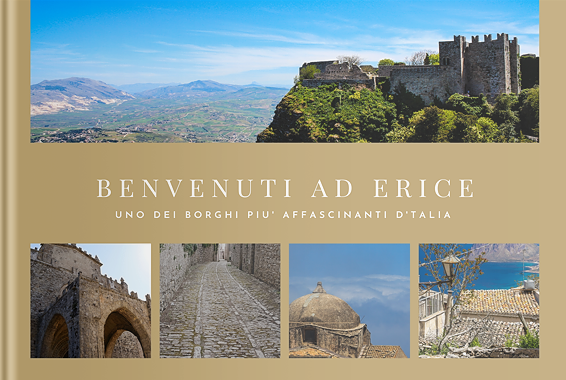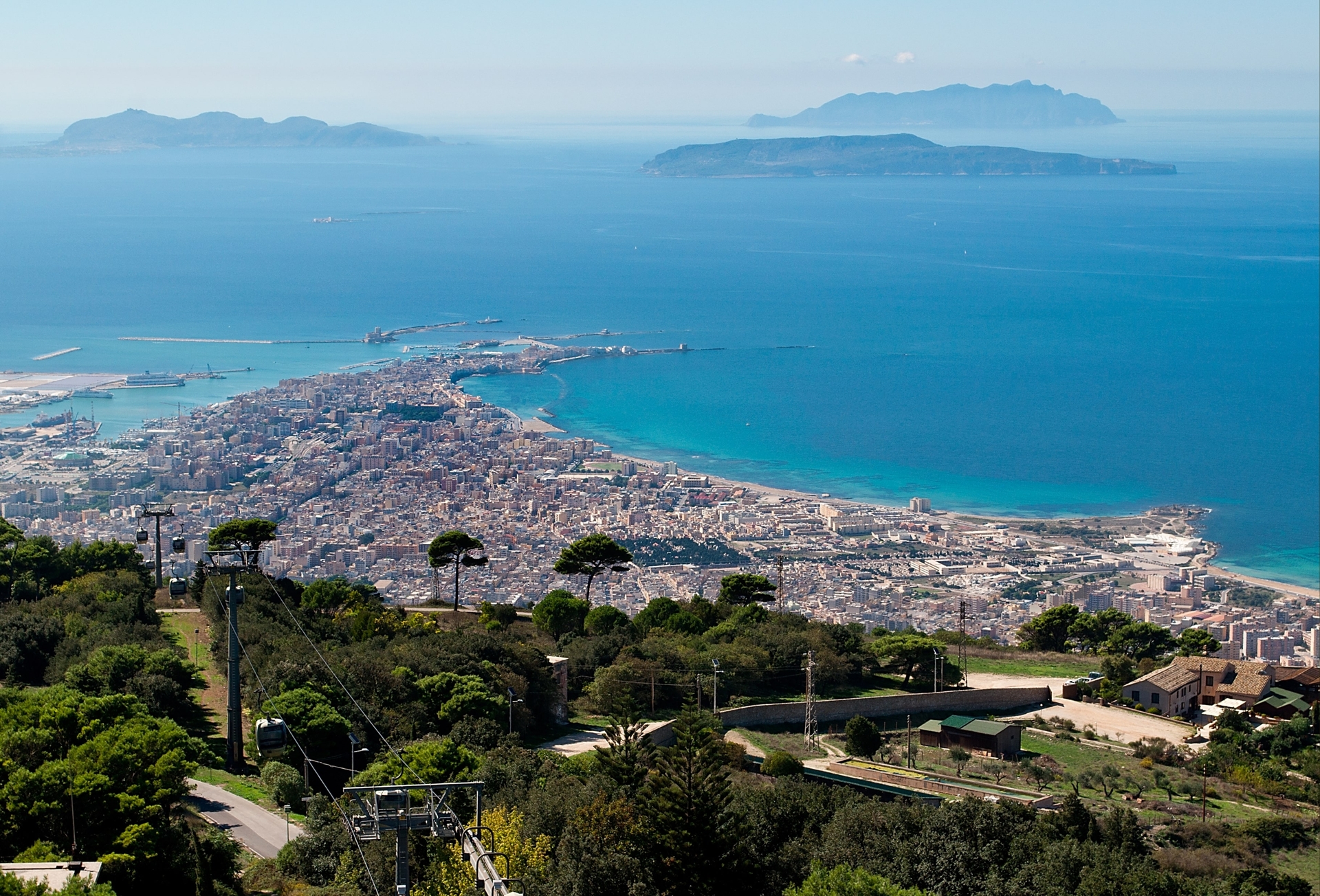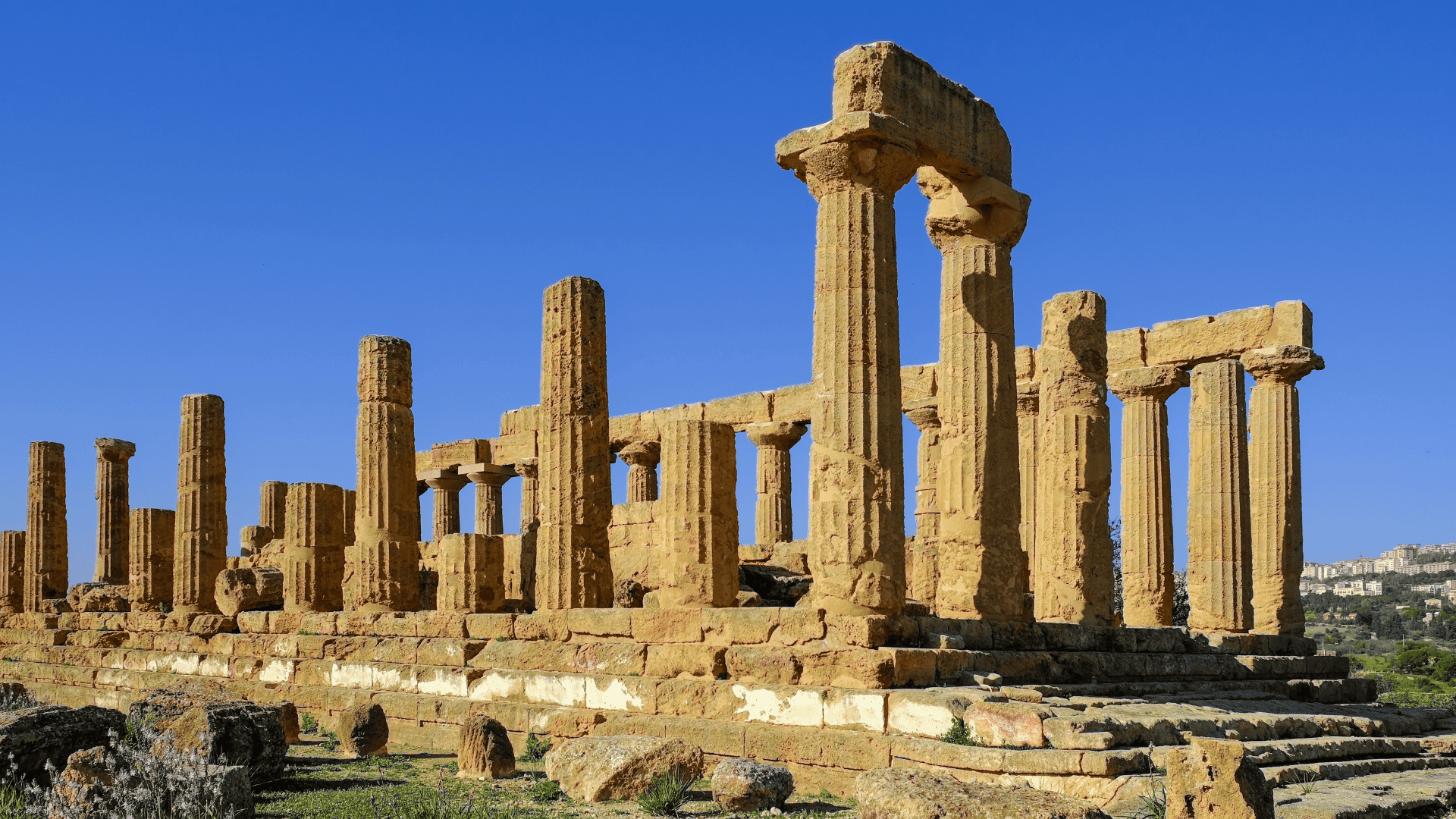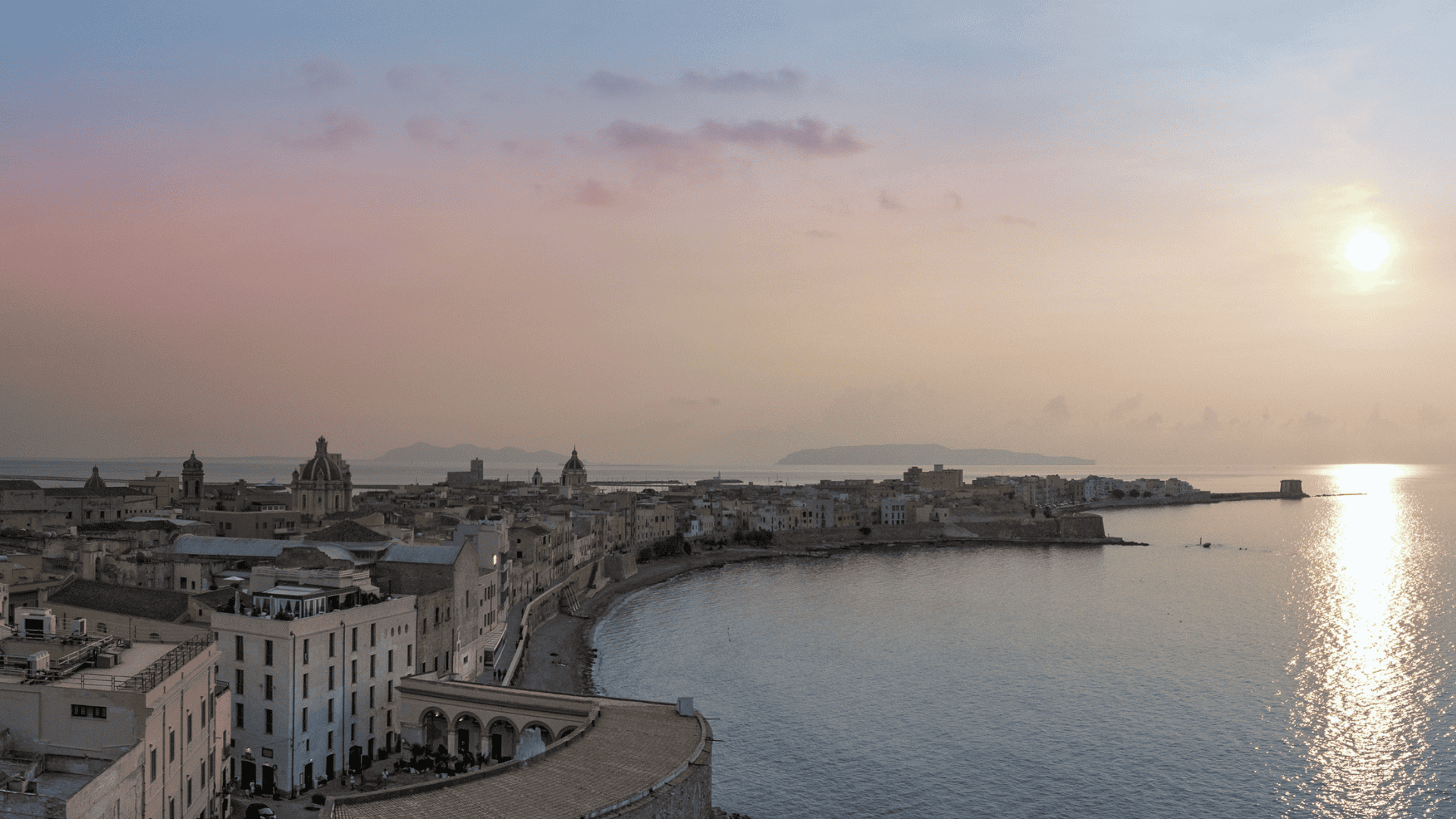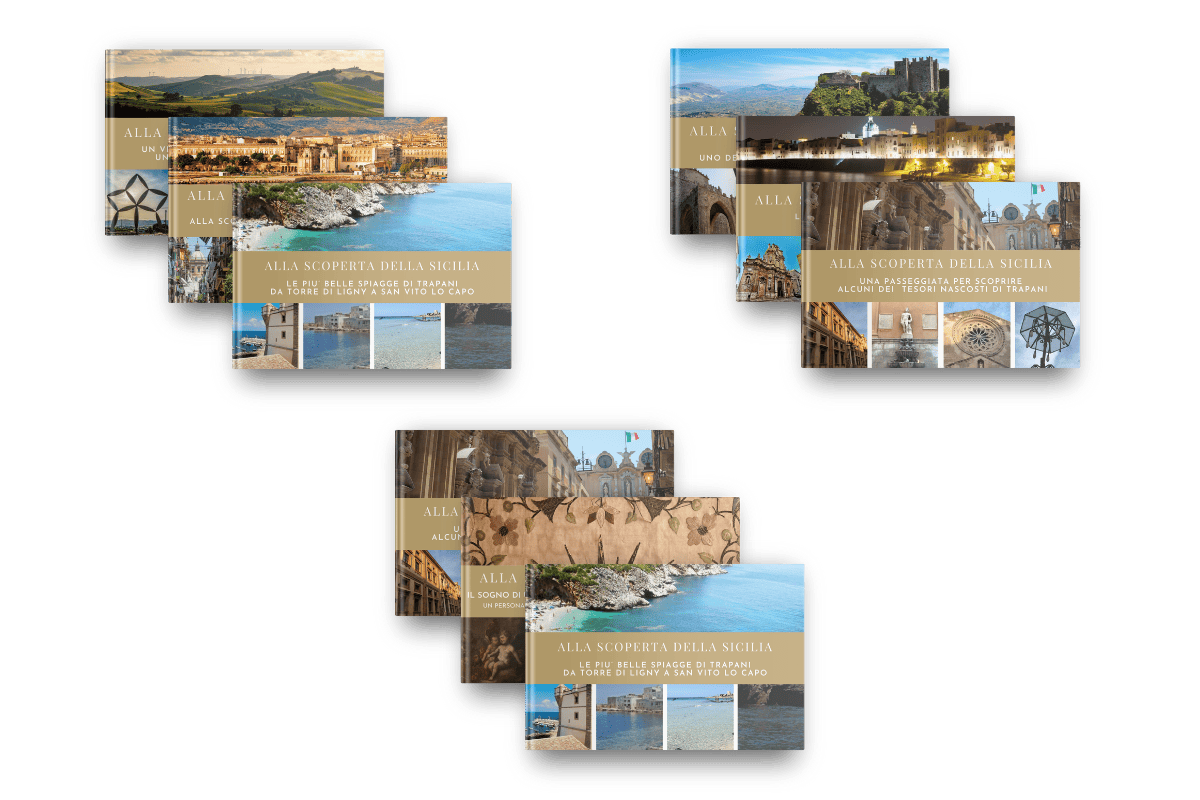Welcome to Erice,
one of the medieval villages
most fascinating in Italy
Erice is a medieval town protected by an ancient city wall that takes every visitor back in time. Its name derives from Erix, son of Aphrodite killed by Heracles, and it stands on Mount San Giuliano 750 metres above sea level, 15 kilometres from Trapani.
Thanks to its location, it is possible to enjoy the most beautiful views of the city of Trapani and the surrounding areas. In fact, in 2014 it was awarded the red flag of the most beautiful villages in Italy. Its medieval style can be seen in the small winding streets, typical medieval arches, ornate courtyards and gardens.
Erice is also famous for its folkloristic Christmas markets, set up on low walls called ‘Balatari’, where you can buy handicrafts such as carpets and ceramics. Tradition also offers typical sweets such as genovesi, made with such care by cloistered nuns. Situated in the nerve centre of Trapani, Giardini Mon Plaisir allows you to reach Erice without difficulty, even via the extra-urban bus service or thanks to the city bus lines, which take you as far as the cable car stop, from where you can reach the top of the city.
YOUR FREE GUIDE TO VISIT ERICE
Gardens Mon Plaisir your ‘personal guide’
to discover West Sicily!
The Castle of Venus
Erice presents itself as a picture full of details to be discovered little by little. The Castle of Venus at Balio is one of Erice’s main attractions. The castle was built by the Normans as a fortress and was built on the ruins of an old sanctuary. With the construction of the castle, the walls and the Balio Towers were also built, which were once connected to the castle by a drawbridge, now replaced by a flight of steps. The spectacle that can be enjoyed from above is considered one of the most beautiful in the world. You can see the port of Trapani, the Egadi Islands, Marsala. Moreover, when visibility conditions are perfect, the island of Ustica can be seen to the northwest and the outline of Pantelleria to the south.
King Frederick’s Tower, a tower dating back to the Punic Wars, was built by Frederick III of Aragon. The tower is 28 metres high and can be visited all the way to the top via a 108-step staircase. The Pepoli Tower was built in 1870 on a rocky peak below the Castle of Venus. It was Count Agostino Pepoli, a scholar and patron, who conceived and had this refuge built for his studies and meditation. It is a tower built in Art Nouveau style. Over the years, Count Pepoli hosted several cultural figures, including the archaeologist Antonio Salinas and the artist Alberto Favara. The Tower was recently inaugurated and selected as the Peace Observatory and Lighthouse of the Mediterranean. The Elimo-Punic Walls are the ancient walls that surround and protect the city, dating back to the 8th century BC. The walls were built by the Elymians and then reinforced by the Punics and improved by the Normans. The purpose of the walls, which surrounded the north-eastern side of the city, was to protect Erice from attacks from the only uncovered side. The fortification consisted of special watchtowers, stairs and openings to allow walking from one side of the wall to the other. To the city walls, the Normans added three gates: Porta Trapani, Porta Spada and Porta Carmine.
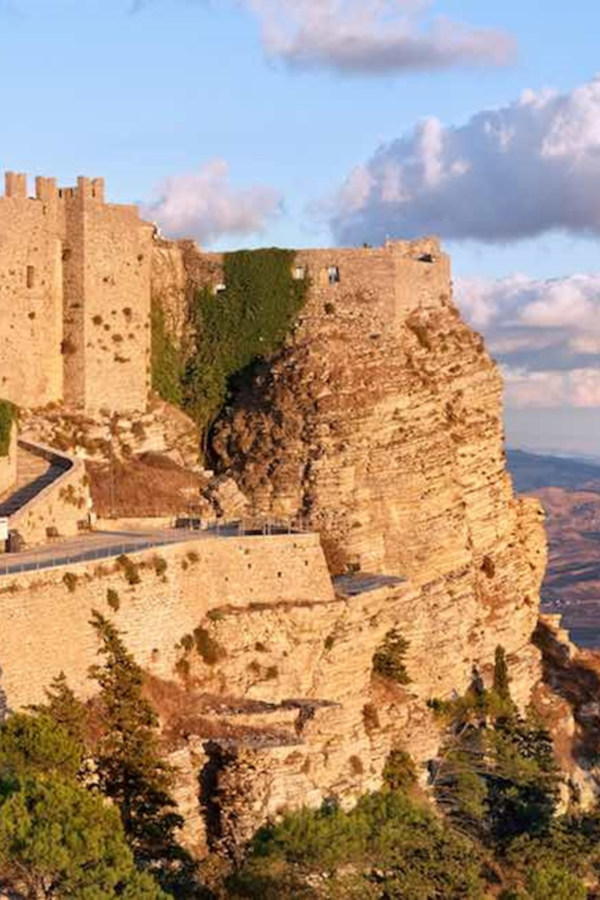

The Castle of Venus
Erice presents itself as a picture full of details to be discovered little by little. The Castle of Venus at Balio is one of Erice’s main attractions. The castle was built by the Normans as a fortress and was built on the ruins of an old sanctuary. With the construction of the castle, the walls and the Balio Towers were also built, which were once connected to the castle by a drawbridge, now replaced by a flight of steps. The spectacle that can be enjoyed from above is considered one of the most beautiful in the world. You can see the port of Trapani, the Egadi Islands, Marsala. Moreover, when visibility conditions are perfect, the island of Ustica can be seen to the northwest and the outline of Pantelleria to the south.
King Frederick’s Tower, a tower dating back to the Punic Wars, was built by Frederick III of Aragon. The tower is 28 metres high and can be visited all the way to the top via a 108-step staircase. The Pepoli Tower was built in 1870 on a rocky peak below the Castle of Venus. It was Count Agostino Pepoli, a scholar and patron, who conceived and had this refuge built for his studies and meditation. It is a tower built in Art Nouveau style. Over the years, Count Pepoli hosted several cultural figures, including the archaeologist Antonio Salinas and the artist Alberto Favara. The Tower was recently inaugurated and selected as the Peace Observatory and Lighthouse of the Mediterranean. The Elimo-Punic Walls are the ancient walls that surround and protect the city, dating back to the 8th century BC. The walls were built by the Elymians and then reinforced by the Punics and improved by the Normans. The purpose of the walls, which surrounded the north-eastern side of the city, was to protect Erice from attacks from the only uncovered side. The fortification consisted of special watchtowers, stairs and openings to allow walking from one side of the wall to the other. To the city walls, the Normans added three gates: Porta Trapani, Porta Spada and Porta Carmine.

Churches
Erice is also famous for its medieval-style churches that are all worth visiting. Among the most important are the following: Church former Monastery of SS. Salvatore, built in 1290 in the palace given as a gift by Count Enrico Chiaramonte; Church of San Martino, built by Count Roger the Norman on the foundations of a pre-existing church dedicated to the saint of the same name; Church of San Giuliano, built in 1076 under Roger of Altavilla as thanks to the saint who helped him drive the Arabs out of Erice; Chiesa ex Monastero San Carlo, a complex founded in 1617 as an orphanage; Chiesa di San Pietro, built around 1363 in Gothic style and with a single nave; Chiesa San Domenico, a complex built at the end of the 15th century, and now an Auditorium and home to two museums of the Centro di Cultura Scientifica Ettore Majorana;
Erice between myth and legend
Mythology and legend shroud this small village in the Trapani area in mystery, traversed over the centuries by the cultures and traditions of dominant peoples. According to Thucydides, Erice was founded by Trojans, who joined the native population and created the Elymian people. For many centuries, Erice was a place coveted by sailors and seafarers because of its strategic location, until it was dominated by the Carthaginians and later by the Roman Empire and the Altavilla family.
Erice began to acquire prestige under the rule of the Normans, who not only renamed the town with the name of Monte San Giuliano, but also embellished the place with new civil and religious buildings. Monastic life at that time led to the construction of several monasteries under the leadership of local families. The presence of palaces and stately homes testifies to the wealth of the families of that time. With the end of the Norman-Swabian era, Erice went from domination to domination until 1861 with the advent of Garibaldi and the Unification of Italy. In 1934, Erice regained its current name. Its territory, called Agro ericino, consisted of the present municipality, Valderice, Custonaci, San Vito lo Capo and Buseto Palizzolo.
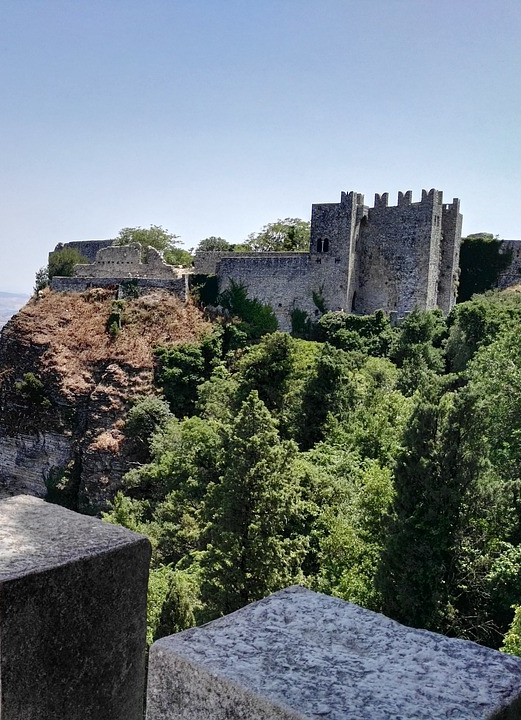

Erice between myth and legend
Mythology and legend shroud this small village in the Trapani area in mystery, traversed over the centuries by the cultures and traditions of dominant peoples. According to Thucydides, Erice was founded by Trojans, who joined the native population and created the Elymian people. For many centuries, Erice was a place coveted by sailors and seafarers because of its strategic location, until it was dominated by the Carthaginians and later by the Roman Empire and the Altavilla family.
Erice began to acquire prestige under the rule of the Normans, who not only renamed the town with the name of Monte San Giuliano, but also embellished the place with new civil and religious buildings. Monastic life at that time led to the construction of several monasteries under the leadership of local families. The presence of palaces and stately homes testifies to the wealth of the families of that time. With the end of the Norman-Swabian era, Erice went from domination to domination until 1861 with the advent of Garibaldi and the Unification of Italy. In 1934, Erice regained its current name. Its territory, called Agro ericino, consisted of the present municipality, Valderice, Custonaci, San Vito lo Capo and Buseto Palizzolo.

